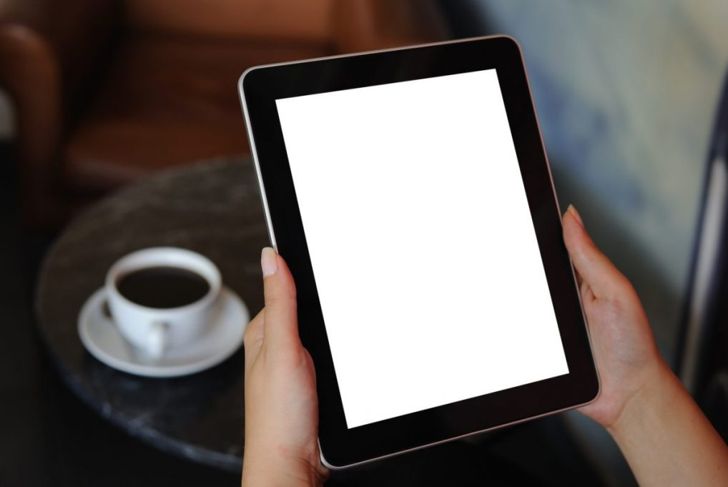The first e-reader was released way back in 1998. The Rocket eBook generated very little interest and sellers quickly discontinued it. Sony next released e-reader models in 2004 and 2006. Amazon’s first Kindle came out in 2007 and sold out in five and a half hours. Consumer views on e-readers changed drastically over the decade. The rapid rise in popularity is due to a combination of factors; the convenience is undeniable, and manufacturers continue to improve the technology. Today, tablets and smartphones are almost interchangeable with e-readers, as most have e-reader apps and settings.
Screen Glare
One of the most challenging aspects of e-readers is reading in direct sunlight. Enjoying a book on the beach with an e-reader isn’t as easy as it looks. A regular paper book does not have a reflective surface, but some e-reader screens do. This is an improvement many manufacturers have focused on recently. They boast a paper-like reading experience, regardless of the location or lighting.
Easier to Read Long Books
Books come in every imaginable page count, but many novels span several hundred or even more than 1000 pages. Anyone who has read a book with 500 or more pages knows weight can become a factor. The book takes up half a backpack and is almost impossible to hold in one hand. Plus, many lengthy novels are part of equally-expansive series. The Wheel of Time series, for instance, is more than 11,000 pages. Rather than filling half your bookshelf with a series, tablets and e-readers store thousands of books in a device that weighs about the same as a mid-sized paperback.
Taking Notes on an e-Reader
Almost every e-reader model offers features to take notes and mark passages. This is useful, especially for students, who are more and more frequently purchasing digital textbooks. The Kindle and Nook also offer interactive functions that allow readers to share their highlights and notes with others. Students can quickly find notes and highlights without flipping through pages. Changing written information in an ebook is simple, and it does not involve erasing or crossing out words on a page.
Out-of-Print Books
Finding copies of books that were out of print used to be very difficult. A limited number of them exist in the world, and many people who have the coveted volumes are not giving them up. Publishers judge the cost of printing against potential profits, and many older books do not make the cut. Sites like Project Gutenberg bring books with expired copyrights back into mainstream availability. Most of the books are free to download and read.
Self-Publishing
The advent of e-readers paved the way for self-publishing. Traditionally, publishers are the gatekeepers of literature. Authors submitted work and hoped an editor would approve their manuscript. Many authors still publish their work through traditional publishers, but the chances of getting your story into the hands of readers are much higher today. There is a little overhead cost involved in distributing an e-book. Authors who cannot find a traditional publisher can self-publish instead. Self-publishing had a surprising effect on traditional publishers as well — self-published authors now often receive publication offers from established companies.
Cost
Comparing the cost of e-readers and e-books to traditional books has to take a lot of factors into account. Second-hand bookstores, thrift shops, and yard sales are a source of cheap reading material, although the selection is limited and unpredictable. The initial cost of an e-reader ranges from 30 to over 200 dollars, depending on the brand and model. Second-hand or refurbished e-readers are available on Amazon and eBay. There are multiple sources of free ebooks, and many libraries now offer selections as well. Amazon and Barnes and Noble have several programs offering free and reduced-cost e-books.
Reading and Visual Impairment
One of the biggest advantages of e-readers is their benefit to people with visual impairment. Large-print books are heavy and take up a lot of space. Libraries cannot keep a wide selection of large-print books in stock because space is limited. E-readers allow readers to magnify the print as much as they choose, and some models will even read out the text, allowing people who require audio assistance to skip the expensive audiobooks in some cases. The software isn’t perfect and the voices can sound robotic at times, but it still offers more options than were available just a few years ago.
Batteries
One big disadvantage of e-readers is battery power. If you pack traditional books on a trip, there’s no chance you’ll open one up to find it dead, or being interrupted in the middle of a chapter by a blinking battery icon. The battery life of e-readers varies widely. Dedicated e-readers without a backlight can have a battery life of two to four weeks, assuming about 30 minutes of use per day and no wifi. Tablets and backlit e-readers have much shorter battery lives.
Backlights
The pros and cons of backlights may be the most important aspect to consider before purchase. Dedicated e-readers are available with or without backlights. The biggest advantage of a backlight is reading anywhere without disturbing others. No reading lamp is necessary for reading in bed. The disadvantages are shorter battery life and eyestrain. Eyestrain when using a dedicated e-reader without a backlight is almost equivalent to reading a traditional book. A backlit screen is more similar to using a tablet or computer monitor.
Available Content
The variety of content available for e-readers is one of their main advantages. People can subscribe to magazines, news, and other publications from anywhere in the world and have it delivered instantly. The archives of every printed edition of publications such as National Geographic and Time magazine are available in electronic formats. The limitations of traditional printing and transportation do not apply to e-books.

 Home
Home Health
Health Diet & Nutrition
Diet & Nutrition Living Well
Living Well More
More




















